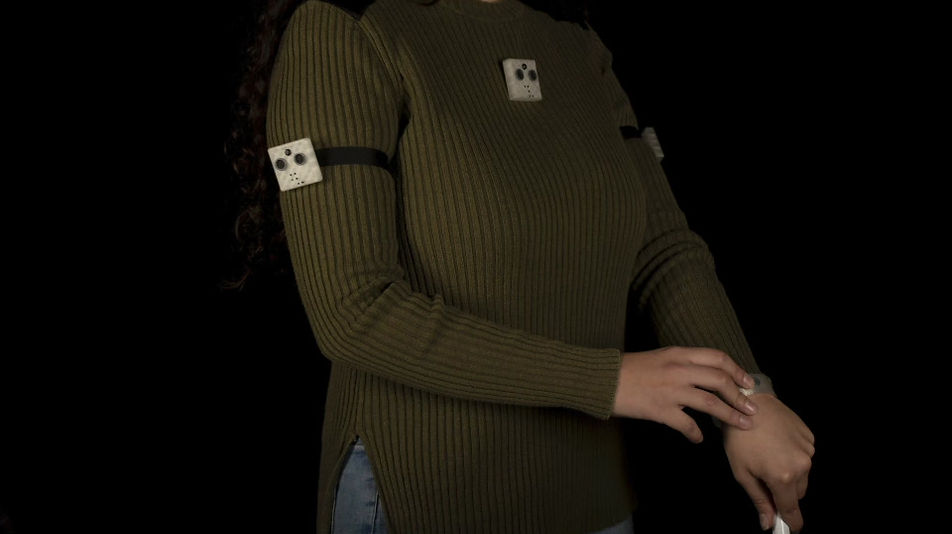
TECH
The pixy camera allows the system to recognize objects using machine learning, a technology that through a programmed algorithm can detect images and pair them up with certain meanings. It is always expanding and as its name indicates it can continue developing and learning in time. It notifies the users of the places they are close to through vibrations on their wristband.
The type of place they are approaching will be identified by different vibration patterns such as three intermittent vibrations to signal a bathroom close by. The users are able to interact with the system by using the button to let it know whether or not they want to go to the notified place or even turn the device completely off. Once the person decides to go to this place, the system synchronizes via Bluetooth to the patches giving directions through vibration to guide them.


Machine learning application
Step 1
Object detection algorithm: the process of finding real-world object instances like car, bike, TV, flowers, and humans in still images or Videos in a similar way to the process our brain executes. It allows for the recognition, localization, and detection of multiple objects within an image which provides us with a much better understanding of an image as a whole.


Step 2
Creation of a database with the labeled train set of images of four categories such as bathrooms for women and men. Then, a convolutional neural network is trained using TensorFlow libraries for python that catalyze features extraction.
Step 3
It is an iterative process that better determines the features over time, increasing accuracy of the models and reducing the loss of information.

Step 4

We stablished a python script that uses open computer vision, simulating pixy camera and processing each single frame in real time.
For each frame, the method takes an image as input and extracts around 2000 region proposals from the image. Each region is reshaped to a fixed size to be passed on as an input to a CNN. It extracts a fixed-length feature vector for each region proposal and these features are used to classify region proposals using category-specific linear SVM.
We got a 99% of accuracy with the implemented method measured with the intersection over union technique.
Step 5
The results applied to our project, that is transmitted though vibration to the user. It it s always evolving and learning.
